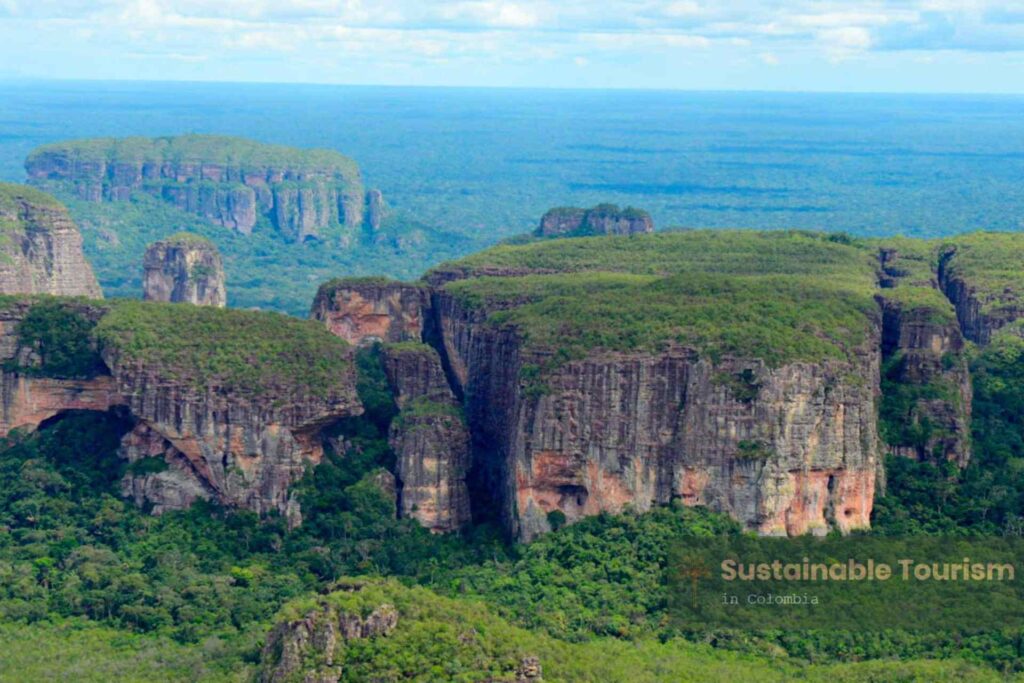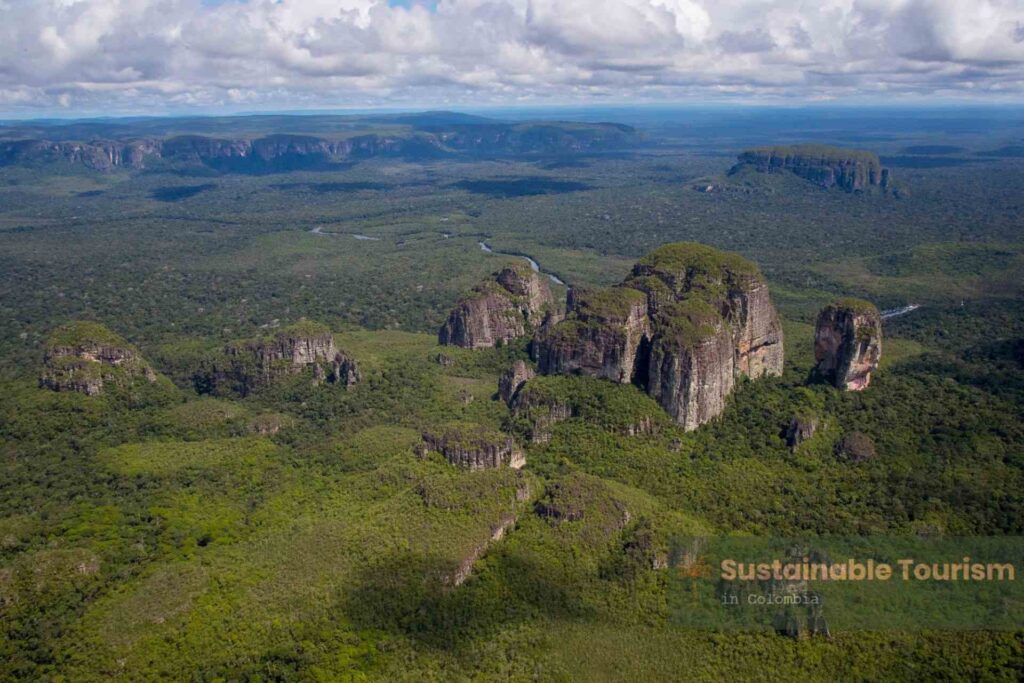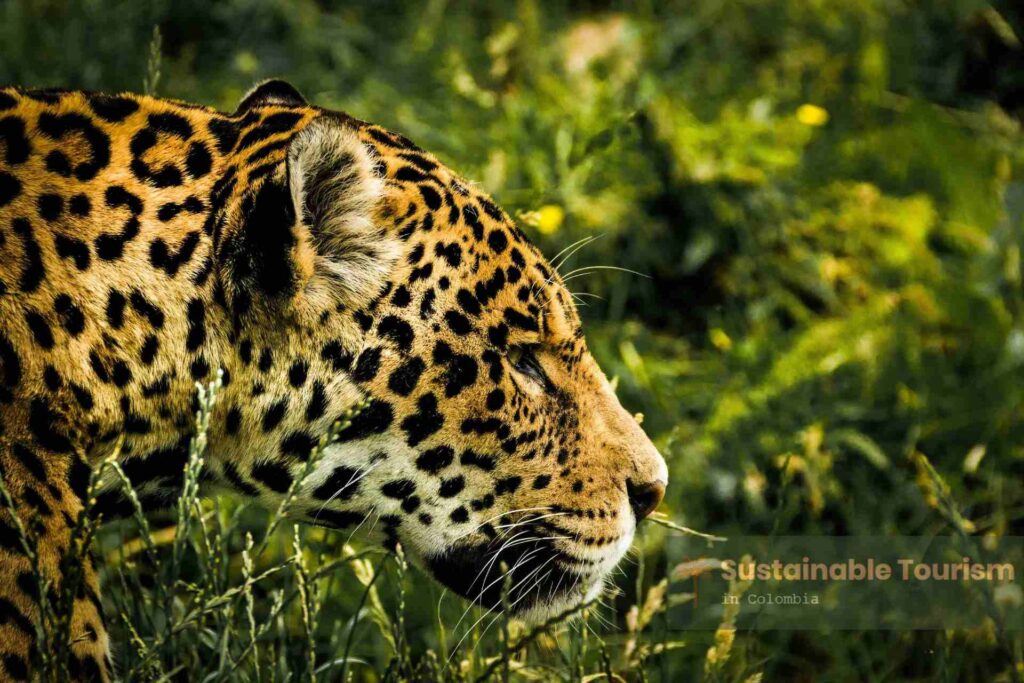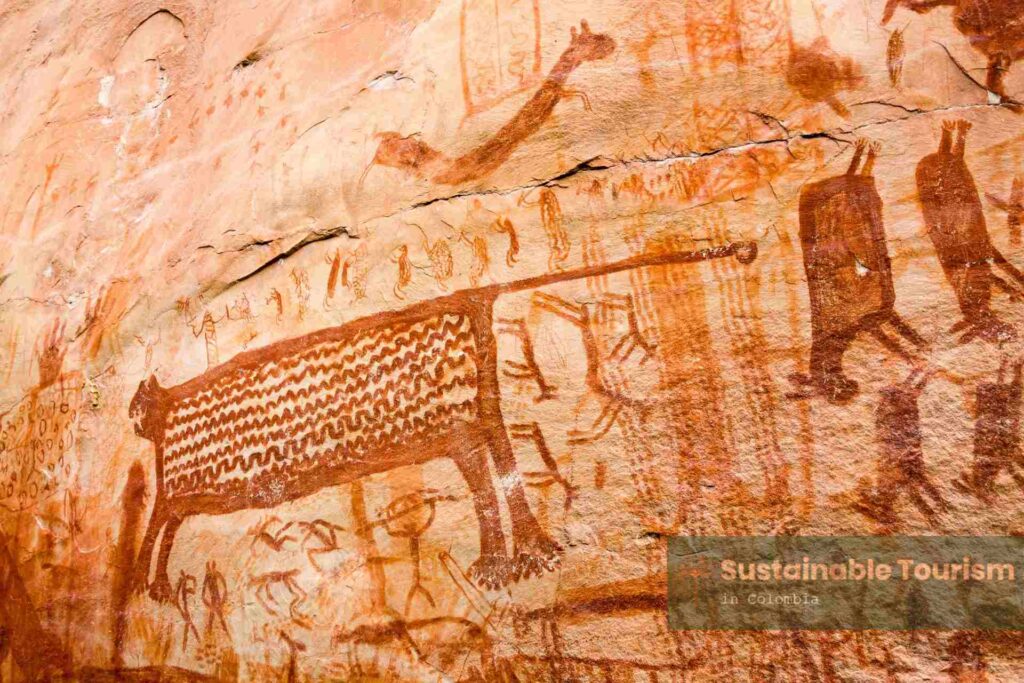Hidden deep within the Colombian Amazon, Chiribiquete National Natural Park is a place of mystery, beauty, and unparalleled biodiversity.
Dubbed “The Maloka of the Jaguar” by UNESCO, this vast expanse of untouched jungle and towering tepuis (table-top mountains) is a sacred site for indigenous tribes and a haven for countless species—many of which are yet to be discovered.

Table of Contents
ToggleWhere is Chiribiquete National Natural Park Located?
Chiribiquete National Natural Park is located in southern Colombia, spanning the departments of Guaviare and Caquetá.
It is the largest national park in Colombia, covering an impressive 4.3 million hectares of pristine rainforest. Due to its isolation, it remains one of the most well-preserved and unexplored places on Earth.
When Was the Park Created?
Chiribiquete was declared a National Natural Park in 1989. Over the years, its territory has been expanded multiple times, with the latest extension in 2018, reinforcing its status as a UNESCO World Heritage Site due to its ecological and cultural significance.
What Activities Can You Do in Chiribiquete?
Although the park remains strictly protected to preserve its fragile ecosystems and indigenous heritage, certain eco-tourism activities can be enjoyed in its buffer zones:
- Hiking and Trekking – Explore the lush jungle trails surrounding the park.
- Caving and Spelunking – Discover ancient caves with fascinating geological formations.
- Rock Art Exploration – Witness prehistoric petroglyphs and rock paintings dating back more than 20,000 years.
- Ethnotourism – Learn about indigenous cultures and their spiritual connection to the land.

Who Lives in Chiribiquete?
The park is home to several uncontacted indigenous tribes, believed to have lived in isolation for centuries. Some of the known groups include the Karijona, Uitoto, and Tukano peoples. These tribes consider Chiribiquete a sacred land, deeply connected to their mythology and traditions.
Besides indigenous communities, the surrounding regions are inhabited by small rural populations dedicated to sustainable tourism and conservation efforts.
How to Get to Chiribiquete National Natural Park?
Due to its remote location, accessing Chiribiquete requires careful planning:
- The nearest cities are San José del Guaviare and Miraflores (Guaviare).
- Flights from Bogotá to San José del Guaviare take about one hour. From there, you can take a chartered flight over the park to witness its majestic tepuis and rainforest from the air.
What to Eat in Chiribiquete?
While inside the park, food sources are limited, but in the surrounding areas, visitors can enjoy traditional Amazonian cuisine, including:
- Mojarra and Pirarucu Fish – Freshwater fish from the Amazon.
- Casabe – A crispy cassava bread.
- Amazonian Fruits – Exotic flavors like copoazú, arazá, and camu camu.
- Mambe and Ají Negro – Indigenous herbal and spicy preparations.
Where to Stay Near Chiribiquete?
Since Chiribiquete is a strictly protected area, there are no hotels within the park. However, eco-lodges and sustainable accommodations can be found in:
- San José del Guaviare – The best base for exploring the region.
- Miraflores, Guaviare – Offers rustic lodges for adventurous travelers.
- Eco-lodges near the Amazon Rainforest – Providing immersive nature experiences.
The Maloka of the Jaguar: A Sacred UNESCO Heritage Site
UNESCO refers to Chiribiquete as “The Maloka of the Jaguar”, highlighting its spiritual and mythological importance to the indigenous peoples. The rock paintings covering the tepuis depict jaguars, shamans, and ancient rituals, showcasing a cultural legacy that dates back over 20,000 years.

Wildlife of Chiribiquete: A Biodiversity Hotspot
Chiribiquete’s vast and untouched wilderness shelters thousands of species, including:
- Jaguars 🐆 – Symbolic protectors of the Amazon.
- Pink River Dolphins 🐬 – Found in nearby rivers.
- Harpy Eagles 🦅 – One of the world’s most powerful raptors.
- Giant Otters 🦦 – Playful predators of Amazonian waters.
- Poison Dart Frogs 🐸 – Vibrantly colored yet highly toxic.
Newly Discovered and Potential Future Species
Scientists estimate that hundreds of species remain undiscovered within Chiribiquete’s dense forests. Recent expeditions have led to the discovery of new plant species, amphibians, and insects. The park’s isolation makes it a critical site for future biological research.
Explore Chiribiquete with SustainableTourismColombia.org
🌍 Chiribiquete National Natural Park is a once-in-a-lifetime destination for those seeking an authentic and untouched natural paradise. With its prehistoric rock art, extraordinary wildlife, and deep cultural significance, this hidden wonder is waiting to be explored.
📍 Plan your journey with SustainableTourismColombia.org and experience the magic of Colombia’s largest and most mysterious national park. Whether it’s hiking, spelunking, or immersing in indigenous culture, Chiribiquete offers an unforgettable adventure!

Read more!
We have amazing places to let you know, read more about beauty Colombia!
- Vallenato: The Soul of Colombia’s Caribbean Music
- Colombia’s Path to Peace: Security, Stability, and Tourism Development
- Unveiling Colombia’s Hidden Gems: Off the Beaten Path Destinations for Unforgettable Experiences – Part 2
- Exploring Colombia’s National Natural Parks: A Paradise of Biodiversity


Recent Comments